Nokia, which we remember, come back! (2 part: RELOADED)
The article is a continuation and logical conclusion of the first part:
habrahabr.ru/blogs/nokia/112670

Let's start with a flashback about how the Finnish company began to produce rather poor-quality devices with outdated fillings.
They began to do so since the release of the Nokia N96, but let's take the touch phones 5800 and Nokia N97.
Both models could not compete with devices from other manufacturers in this price range. 5800 was bought, perhaps, thanks to the price, be it a little higher ...
But the price could not overshadow the obvious shortcomings:
')
- Symbian OS 9.4, which was made literally "on the knee" and could not compete with the axes originally made for touch control.
- ARM 11 processor.
- 128 MB of RAM, of which less than half were accessible to the user.
- The complete absence of a 3D accelerator.
And, perhaps, the matter would somehow save the optimization, but, alas, the company did not take care of it.
For comparison, I will give the characteristics of the Nokia N95 8GB:
- TI OMAP2420 @ 330 MHz (Dual CPU)
- GPU (PowerVR MBX)
- VGP (TI DM290Z)
- Ram: 128 MB (Announced in 2007, August)
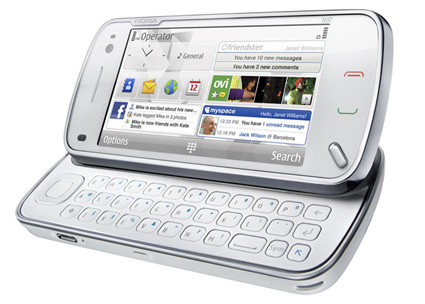
N97 (as the technical characteristics are almost identical, we will not consider them in detail), it also failed in the market with a terrible crash, why? - Just because Nokia did not want to correct and modify its old mistakes, huge funds, “pumped” into the advertising campaign, first gave a good start. The device began to buy well, the company reported high sales, but after a short period of time they began to actively return. Because of the massive defect of the camera shutter, due to the massive defect of the lock button, due to the defective display, simply speaking, because the device was simply not ready to enter the market: probably, if it were one of the prototypes, it would be forgiven for him this, but not the flagship of NOKIA.
After the failure, the company had to recognize it as a failed model and apologize to the users.
Then another wave came. All devices stood out as twin brothers duplicating 5800:
Nokia N97 Mini - ARM11 @ 434 MHz + FPU + VGP (TI DM510), Ram: 128 MB
5530 - the similar processor, 128 MB SDRAM, Symbian OS 9.4
Nokia X6 - ARM11 @ 434 MHz + FPU + VGP (TI DM510), Ram: 128 MB. (it differs only in the type of sensor: capacitive and resistive, but, you see, it’s foolish to hope to entice users of apple devices only by the fact that “is the touch screen like an iPhone?”)
And Nokia has created the N8.
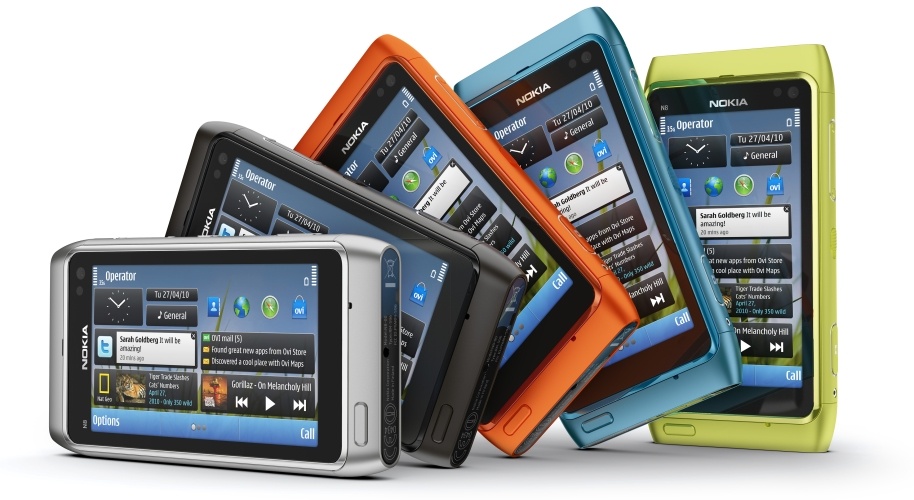
This is the company's flagship at the moment, but it is in the middle price segment (which is extremely unusual for leading devices), and even if you look deeper, we only correlate it with this price segment, functionality and software quality to this price segment.
But, again, we come across the same mistakes as before.
The core of the ARM1136 processor with a frequency of 680 MHz (maximum 800. This is so, for reference). No, I can understand everything, but putting in my supposedly most powerful ARM11 device is, to put it mildly, strange. And not because I so want and that I am a fan of apple devices or Samsung. Not. That's because ARM11 has more power consumption than Cortex-A8, and the number of operations performed is less, paradoxical, isn't it?
The Broadcom BCM2727 accelerator, well ... fans shout about the ARM Cortex-A8 core going there. Yes. This is true, but given the fact that this is a multimedia accelerator, it is possible to assume the inadequate power output of the core. Namely, only 600 MHz. This frequency is quite enough for photo processing, video decoding, support and sound processing and acceleration / graphics processing, but we will not find anything outstanding here.
Symbian There are disputes no less calm than about the accelerator. We all know very well how “good” Nokia has been doing OS lately. The fall could be observed with the release of version 9.3 for push-button devices. And soon after that, the version for poking into the screen came out - the legendary 9.4. This Axis was “sharpened” (apparently with a file, andfig blunt) under the finger. Those. Nokia developers stretched 9.3 on the nHD screen, added finger control and made it more resource-demanding, apparently just like that, I can not, alas, explain.
Actually it comes out the next finished this axis. Namely symbian ^ 3. Differences from 9.4 are minimal.
This is a multitouch (it's about time? 3 years after the release of the first iPhone), clicking on the one-touch icon and 3 desktops (funny, but in Omnia HD there were 3 desktops, although there are 9.4).
This is how nokia sank another chance.
Of course, you want to hear about the n900?

I can write a lot about him, because the luxury device for geeks (that is, for us with you) was not done by Nokia for a long time, but I will limit myself to just a quote:
The N900 was made not by nokia. The aliens just flew in, put on a luxurious iron, washed down a chic open AX and gave this miracle to geeks who brought it to a new level.
A Nokia ... bypassed this wonderful device.
They abandoned him, left without support. As if they were afraid of their own brainchild. Why? I do not know, I have no answer to this question again.
But any device, no matter how good it is, abandoned by its own company has no chance.
N9? Does he have a chance? Full In the end, this is their last opportunity to stand up and find a place in the market or otherwise leave it. I sincerely believe that the Finnish company understands this, and therefore has pumped all its strength and resources into it.
In the table, I presented the main characteristics of the Nokia devices, and also, for comparison, I added the device, the android flagship, which was released at about the same time as the X6, N97 and N8.
Summing up:
The sad fact is, but still ... but still the fans will wait for a miracle, and the rest will just watch this whole action and buy what is the best at the moment. From this, I want to take only one thing that Nokia, step by step, is missing its market. In this case, the beginning of this loss comes from the distant 2007, the very year when Steve Jobs introduced the first iPhone.
And may the fans forgive me for this once great company.
Where are you ?, that Great Nokia ?, come back!
We are still waiting for you, we still believe in you.
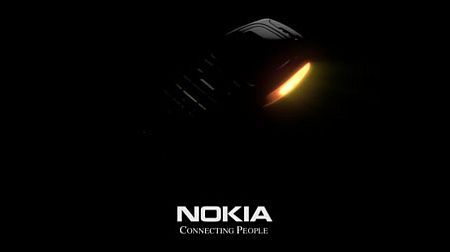
habrahabr.ru/blogs/nokia/112670

Let's start with a flashback about how the Finnish company began to produce rather poor-quality devices with outdated fillings.
They began to do so since the release of the Nokia N96, but let's take the touch phones 5800 and Nokia N97.
Both models could not compete with devices from other manufacturers in this price range. 5800 was bought, perhaps, thanks to the price, be it a little higher ...
But the price could not overshadow the obvious shortcomings:
')
- Symbian OS 9.4, which was made literally "on the knee" and could not compete with the axes originally made for touch control.
- ARM 11 processor.
- 128 MB of RAM, of which less than half were accessible to the user.
- The complete absence of a 3D accelerator.
And, perhaps, the matter would somehow save the optimization, but, alas, the company did not take care of it.
For comparison, I will give the characteristics of the Nokia N95 8GB:
- TI OMAP2420 @ 330 MHz (Dual CPU)
- GPU (PowerVR MBX)
- VGP (TI DM290Z)
- Ram: 128 MB (Announced in 2007, August)

N97 (as the technical characteristics are almost identical, we will not consider them in detail), it also failed in the market with a terrible crash, why? - Just because Nokia did not want to correct and modify its old mistakes, huge funds, “pumped” into the advertising campaign, first gave a good start. The device began to buy well, the company reported high sales, but after a short period of time they began to actively return. Because of the massive defect of the camera shutter, due to the massive defect of the lock button, due to the defective display, simply speaking, because the device was simply not ready to enter the market: probably, if it were one of the prototypes, it would be forgiven for him this, but not the flagship of NOKIA.
After the failure, the company had to recognize it as a failed model and apologize to the users.
Then another wave came. All devices stood out as twin brothers duplicating 5800:
Nokia N97 Mini - ARM11 @ 434 MHz + FPU + VGP (TI DM510), Ram: 128 MB
5530 - the similar processor, 128 MB SDRAM, Symbian OS 9.4
Nokia X6 - ARM11 @ 434 MHz + FPU + VGP (TI DM510), Ram: 128 MB. (it differs only in the type of sensor: capacitive and resistive, but, you see, it’s foolish to hope to entice users of apple devices only by the fact that “is the touch screen like an iPhone?”)
And Nokia has created the N8.

This is the company's flagship at the moment, but it is in the middle price segment (which is extremely unusual for leading devices), and even if you look deeper, we only correlate it with this price segment, functionality and software quality to this price segment.
But, again, we come across the same mistakes as before.
The core of the ARM1136 processor with a frequency of 680 MHz (maximum 800. This is so, for reference). No, I can understand everything, but putting in my supposedly most powerful ARM11 device is, to put it mildly, strange. And not because I so want and that I am a fan of apple devices or Samsung. Not. That's because ARM11 has more power consumption than Cortex-A8, and the number of operations performed is less, paradoxical, isn't it?
The Broadcom BCM2727 accelerator, well ... fans shout about the ARM Cortex-A8 core going there. Yes. This is true, but given the fact that this is a multimedia accelerator, it is possible to assume the inadequate power output of the core. Namely, only 600 MHz. This frequency is quite enough for photo processing, video decoding, support and sound processing and acceleration / graphics processing, but we will not find anything outstanding here.
Symbian There are disputes no less calm than about the accelerator. We all know very well how “good” Nokia has been doing OS lately. The fall could be observed with the release of version 9.3 for push-button devices. And soon after that, the version for poking into the screen came out - the legendary 9.4. This Axis was “sharpened” (apparently with a file, and
Actually it comes out the next finished this axis. Namely symbian ^ 3. Differences from 9.4 are minimal.
This is a multitouch (it's about time? 3 years after the release of the first iPhone), clicking on the one-touch icon and 3 desktops (funny, but in Omnia HD there were 3 desktops, although there are 9.4).
This is how nokia sank another chance.
Of course, you want to hear about the n900?

I can write a lot about him, because the luxury device for geeks (that is, for us with you) was not done by Nokia for a long time, but I will limit myself to just a quote:
The N900 was made not by nokia. The aliens just flew in, put on a luxurious iron, washed down a chic open AX and gave this miracle to geeks who brought it to a new level.
A Nokia ... bypassed this wonderful device.
They abandoned him, left without support. As if they were afraid of their own brainchild. Why? I do not know, I have no answer to this question again.
But any device, no matter how good it is, abandoned by its own company has no chance.
N9? Does he have a chance? Full In the end, this is their last opportunity to stand up and find a place in the market or otherwise leave it. I sincerely believe that the Finnish company understands this, and therefore has pumped all its strength and resources into it.
In the table, I presented the main characteristics of the Nokia devices, and also, for comparison, I added the device, the android flagship, which was released at about the same time as the X6, N97 and N8.
| CPU | RAM | 3D accelerator | |
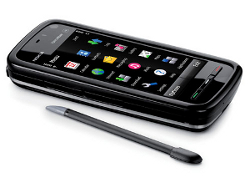 | ARM 11 434 Mhz | 128 Mb | Not |
 | ARM 11 434 Mhz | 128 Mb | Not |
 | ARM 11 434 Mhz | 128 Mb | Not |
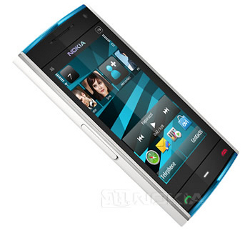 | ARM 11 434 Mhz | 128 Mb | Not |
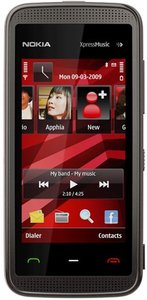 | ARM 11 434 Mhz | 128 Mb | Not |
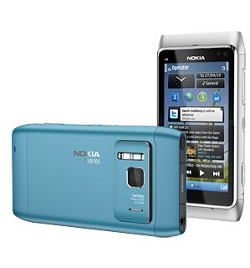 | ARM 11 680 Mhz | 256 Mb | Broadcom bcm2727 |
 | Qualcomm QSD8250 1 Ghz | 512 Mb | AMD z430 |
Summing up:
The sad fact is, but still ... but still the fans will wait for a miracle, and the rest will just watch this whole action and buy what is the best at the moment. From this, I want to take only one thing that Nokia, step by step, is missing its market. In this case, the beginning of this loss comes from the distant 2007, the very year when Steve Jobs introduced the first iPhone.
And may the fans forgive me for this once great company.
Where are you ?, that Great Nokia ?, come back!
We are still waiting for you, we still believe in you.

Source: https://habr.com/ru/post/112796/
All Articles